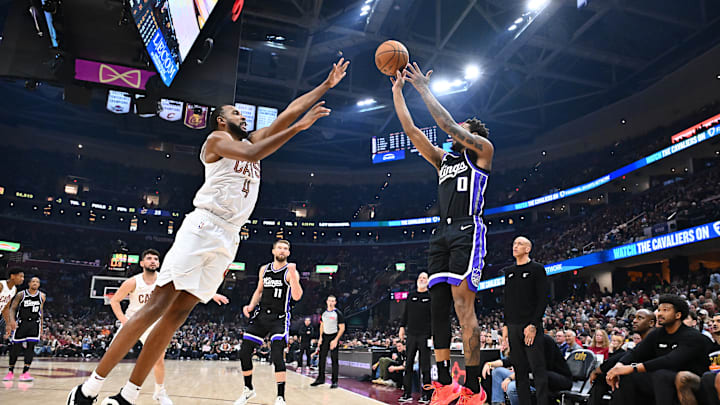The old adage "It's a Make or Miss League" has never applied more to the Cleveland Cavaliers.
On Sunday, the Cavs had a chance to put the cherry on top of an exceptional regular season. Hosting the vulnerable Sacramento Kings, who were playing without multiple starters, Cleveland could clinch the No. 1 seed in the Eastern Conference Playoffs with a win.
Instead, the Kings pulled off the upset, 120-113, to hold the Cavs back from clinching and to further cement the Kings into the Play-Off Tournament out west.
To understand how the Cavaliers lost, you need look no further than one specific line in the box score: Sacramento shot 14-of-33 from 3-point range (42.4 percent) while Cleveland shot 10-of-38 from distance (26.3 percent).
Two days later, the Cavaliers hosted the Chicago Bulls with another shot to lock up that top seed. This time they did so in resounding fashion, a 135-113 victory. Cleveland shot 25-of-50 from deep (50 percent) and the Bulls hit only 15 of their 43 attempts (34.9 percent). No. 1 seed, locked in.
Both games illustrate a trend that has followed the Cavaliers all season long. They are an exceptional shooting team, the best in the league this year and one of the best combinations of volume and efficiency in league history.
Yet when their opponent also gets hot from distance, suddenly the dominant Cavaliers don't look so dominat any more.
The Cavaliers have a massive weakness this season
As laid out by NBA.com's John Schumann in his excellent weekly Power Rankings, the Cavaliers are a league-best 41-3 when their opponent shoots worse than league average (36 percent) from beyond the arc. When their opponent shoots better than 36 percent, however, they are only 22-13. That includes a 1-6 mark over the last three weeks.
With many team's weaknesses, you can point to some structural issue. The Orlando Magic are a poor shooting team because they don't employ many dangerous shooters. The New York Knicks struggle to protect the rim because Karl-Anthony Towns is playing the bulk of their center minutes.
Yet one thing that teams cannot directly control -- at least not to any appreciable degree -- is opponent 3-point percentage. Historically, NBA defenses are able to affect an opponent's 3-point volume, but they don't have much of an impact on opponent 3-point accuracy.
That means this problem is largely unsolvable. Perhaps shifting the rotation slightly or emphasizing closeouts and switch discipline and weakside rotations can bring down opponents' volume, making it hurt less when they shoot well, but that's a minor adjustment.
Opponents take a league-average 37.4 3-point attempts per game against Cleveland, and the best defenses in the league are spread all along that list. The Orlando Magic and Houston Rockets allow a small number of 3-point attempts, but the Oklahoma City Thunder are eighth.
That means, quite frankly, that the Cavaliers are extremely suceptible to an opponent's hot shooting night. When that happens, they have to match it with a great offensive night of their own. When they do, they have a strong chance to win.
If they don't -- if their opponent lights it up and the Cavaliers are average or worse themselves -- it's doomsday. And with teams like the Indiana Pacers and Boston Celtics lining up in the Eastern Conference Playoffs, the Cavs will have their work cut out for them.
